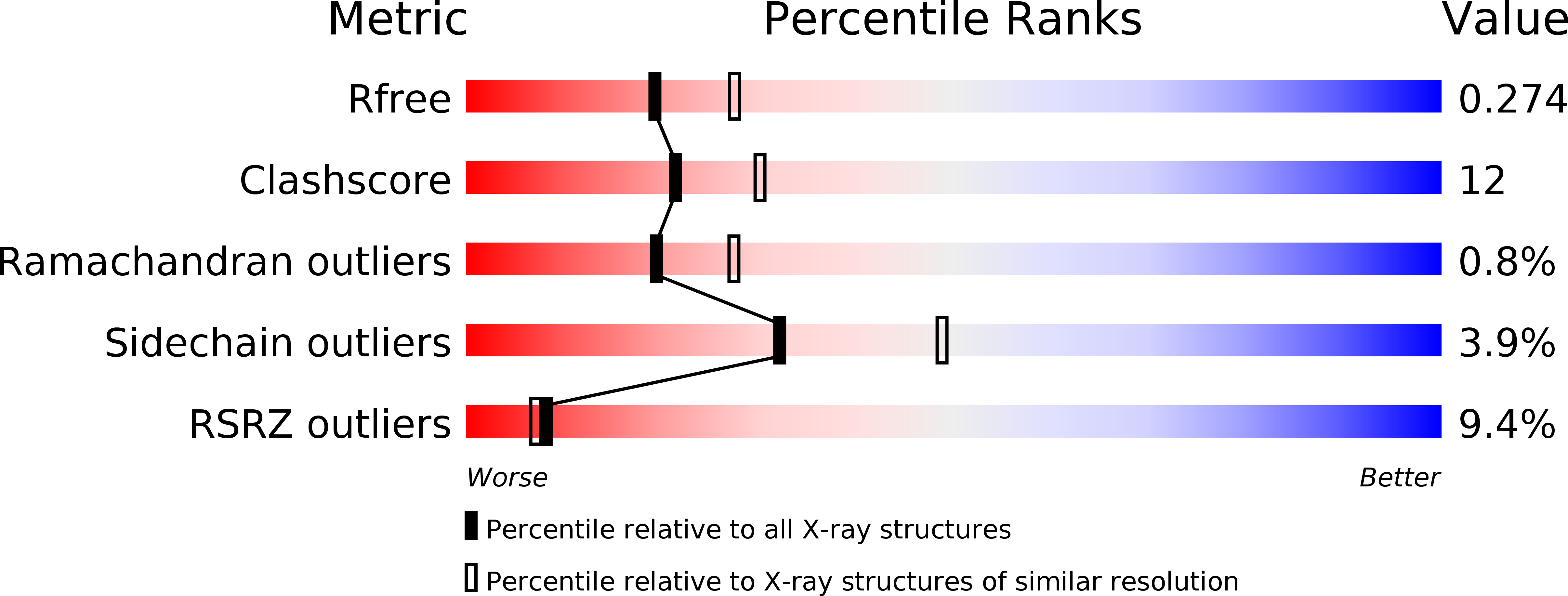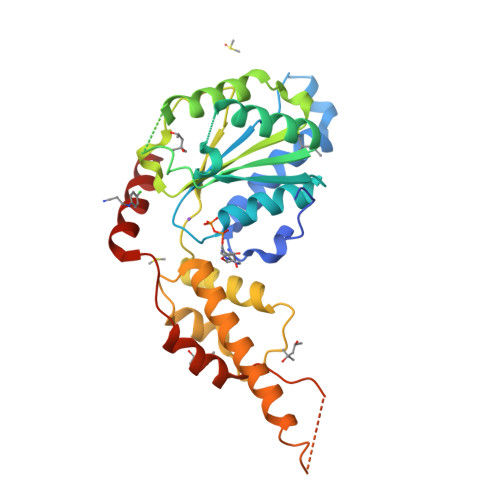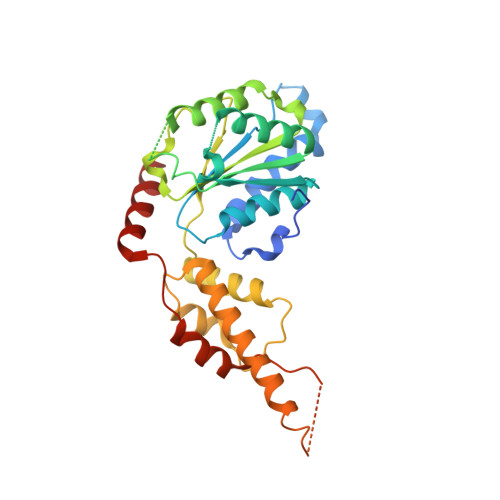Crystal structure of the catalytic D2 domain of the AAA+ ATPase p97 reveals a putative helical split-washer-type mechanism for substrate unfolding.
Stach, L., Morgan, R.M., Makhlouf, L., Douangamath, A., von Delft, F., Zhang, X., Freemont, P.S.(2020) FEBS Lett 594: 933-943
- PubMed: 31701538
- DOI: https://doi.org/10.1002/1873-3468.13667
- Primary Citation of Related Structures:
6G2V, 6G2W, 6G2X, 6G2Y, 6G2Z, 6G30 - PubMed Abstract:
Several pathologies have been associated with the AAA+ ATPase p97, an enzyme essential to protein homeostasis. Heterozygous polymorphisms in p97 have been shown to cause neurological disease, while elevated proteotoxic stress in tumours has made p97 an attractive cancer chemotherapy target. The cellular processes reliant on p97 are well described. High-resolution structural models of its catalytic D2 domain, however, have proved elusive, as has the mechanism by which p97 converts the energy from ATP hydrolysis into mechanical force to unfold protein substrates. Here, we describe the high-resolution structure of the p97 D2 ATPase domain. This crystal system constitutes a valuable tool for p97 inhibitor development and identifies a potentially druggable pocket in the D2 domain. In addition, its P6 1 symmetry suggests a mechanism for substrate unfolding by p97. DATABASE: The atomic coordinates and structure factors have been deposited in the PDB database under the accession numbers 6G2V, 6G2W, 6G2X, 6G2Y, 6G2Z and 6G30.
Organizational Affiliation:
Section of Structural and Synthetic Biology, Department of Infectious Disease, Imperial College London, UK.





















